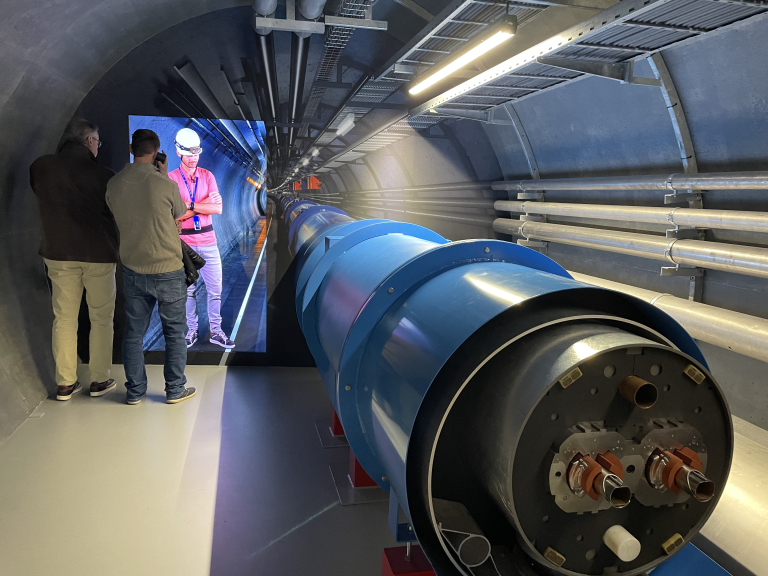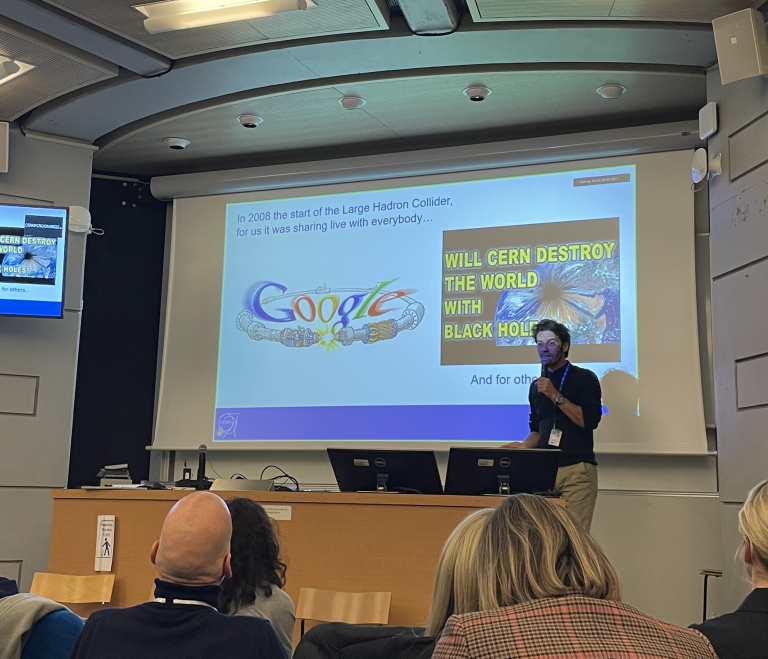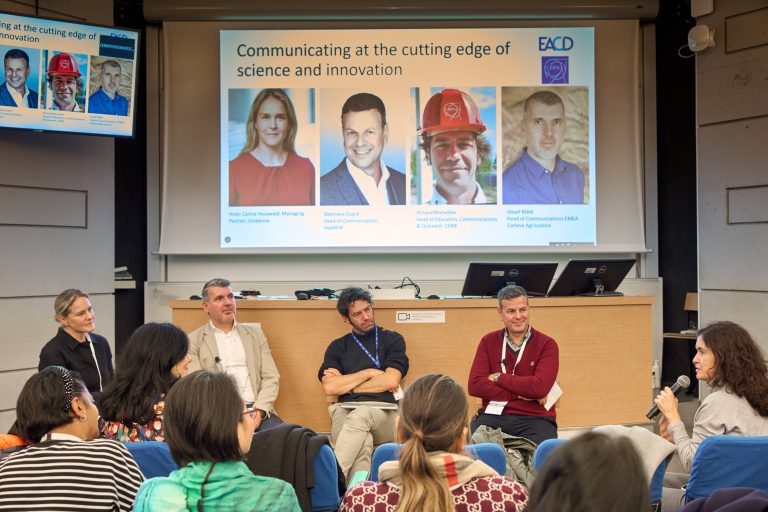How I Spent a Day at CERN and Immersed in Science Communication (SciCom)

By Olga Balan, Multilingual Tech Communicator, EMEA Social Strategy Lead at Fortinet
Earlier this week, I had the privilege of attending a thought-provoking event hosted by the European Association of Communication Directors (EACD) at CERN in Geneva. The day offered a rare look into CERN’s world-leading science communication strategies, highlighting the challenges, educational efforts, and responsibilities involved in making complex science accessible to the public.
A Tour Through CERN’s Science Gateway
We started the day with an inspiring tour at CERN’s Science Gateway, a state-of-the-art center designed to bridge science and society. This facility features interactive exhibitions, hands-on workshops, and immersive environments that bring CERN’s complex research to life. We explored the Large Hadron Collider (LHC), a 27-kilometer circular accelerator where protons and ions collide at near-light speed to uncover fundamental particles. The LHC has led to profound discoveries, including the 2012 confirmation of the Higgs boson, and continues to expand our understanding of matter.

One unexpected highlight was seeing the first World Wide Web server—a reminder that CERN was the birthplace of the Web. Invented by British scientist Tim Berners-Lee in 1989 to meet the need for information-sharing among researchers, this early server symbolizes the start of a connectivity revolution that continues to shape our world today.
The tour then continued to CERN’s other facilities, where we had a guided visit of the Synchrocyclotron and the Antimatter Factory, exploring CERN’s pioneering research.
Addressing Conspiracy Theories and Communication Challenges: Insights from CERN’s Comms Team
The event transitioned into sessions with CERN’s communications team — Arnaud Marsollier, Paola Catapano, Daniela Antonio, and Fabienne Marcastel Landua — along with Ana Godinho, who offered insights into how CERN became a world-renowned institution while managing public misconceptions, upholding brand integrity, and navigating a landscape of conspiracy theories along with their communication and social media dynamics. It was insightful to hear about their unique challenges in science communication and telling science stories among black holes and Nobel prizes.

Since the launch of the LHC, CERN has faced conspiracy theories, particularly fears around black holes, and the popularity of Dan Brown’s The Da Vinci Code and Angels & Demons further fuelled myths around antimatter and “dark science.” To counteract these misconceptions, CERN took a proactive approach by inviting Hollywood figures, including Tom Hanks, to tour its facilities. This invitation not only engaged the actors but attracted press from all over the world, giving global media a first-hand look at the real science behind the stories and reinforcing CERN’s commitment to transparency and scientific literacy.
A key takeaway for me is the importance of clear, consistent messaging and engaging scientists as advocates to combat misinformation, build public trust, and make complex science accessible to a global audience.
Panel Discussion: Cross-Industry Perspectives on Science Communication
The event also featured a dynamic panel discussion on cross-industry perspectives in science communication. Moderated by Carina Hauswald, the panel included Arnaud Marsollier, József Máté, and Stephan Dupré. This interactive session explored the unique challenges of communicating at the forefront of science and technology, sharing best practices and lessons learned across industries.

This experience at CERN highlighted the powerful role that science communication has in building public trust and understanding. Witnessing CERN’s dedication to transparency, education, and public engagement was truly inspiring—setting a benchmark for excellence in SciCom.
Views are my own.
